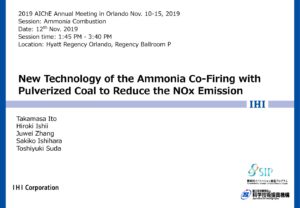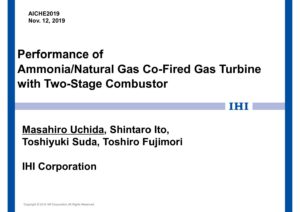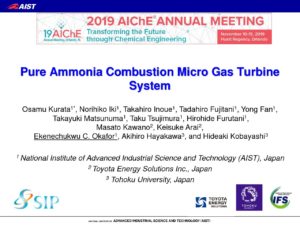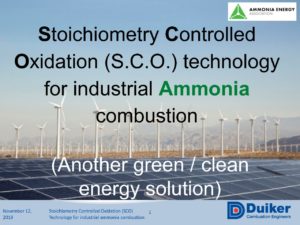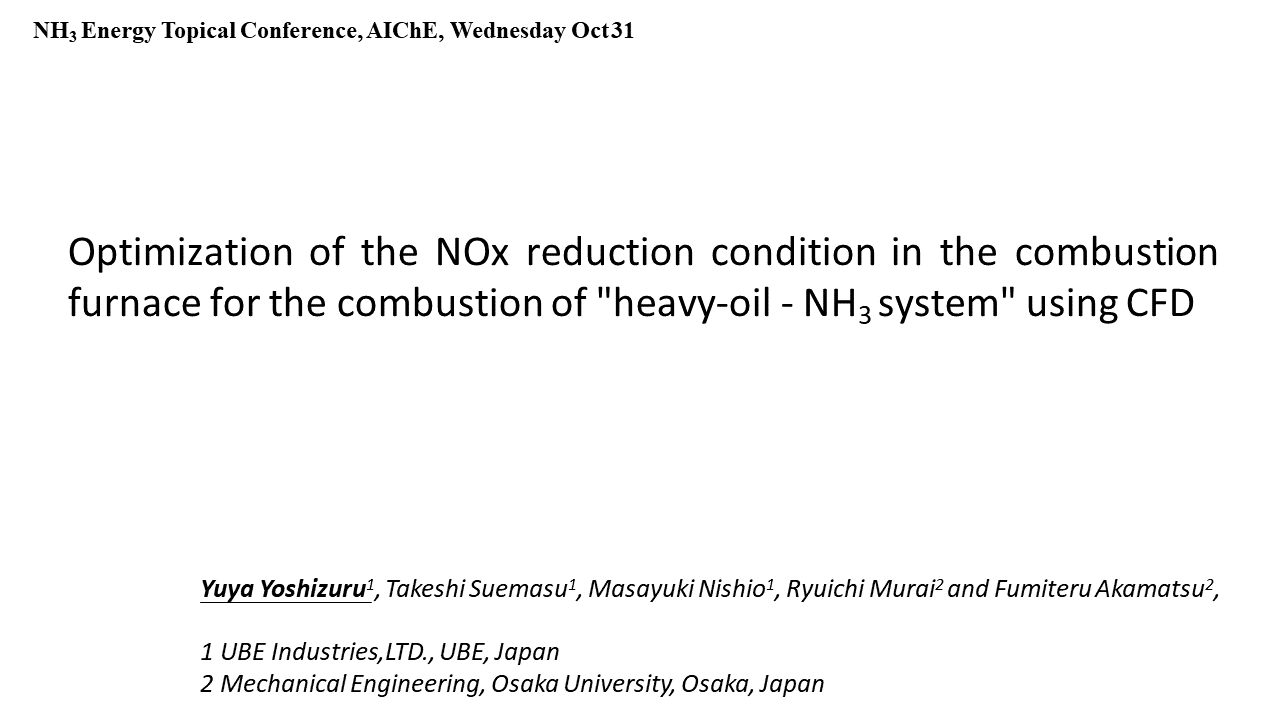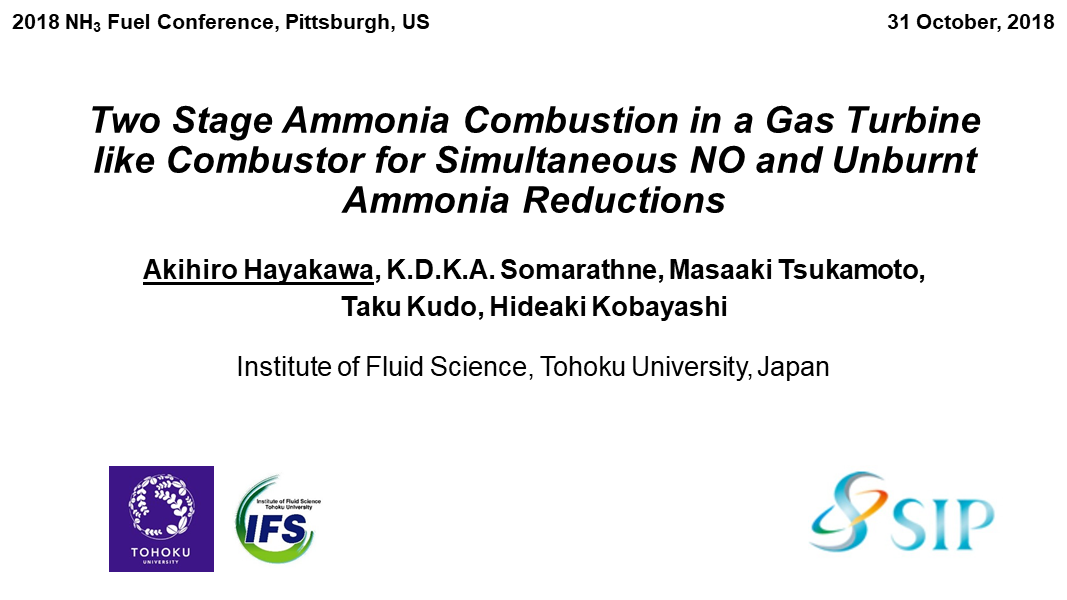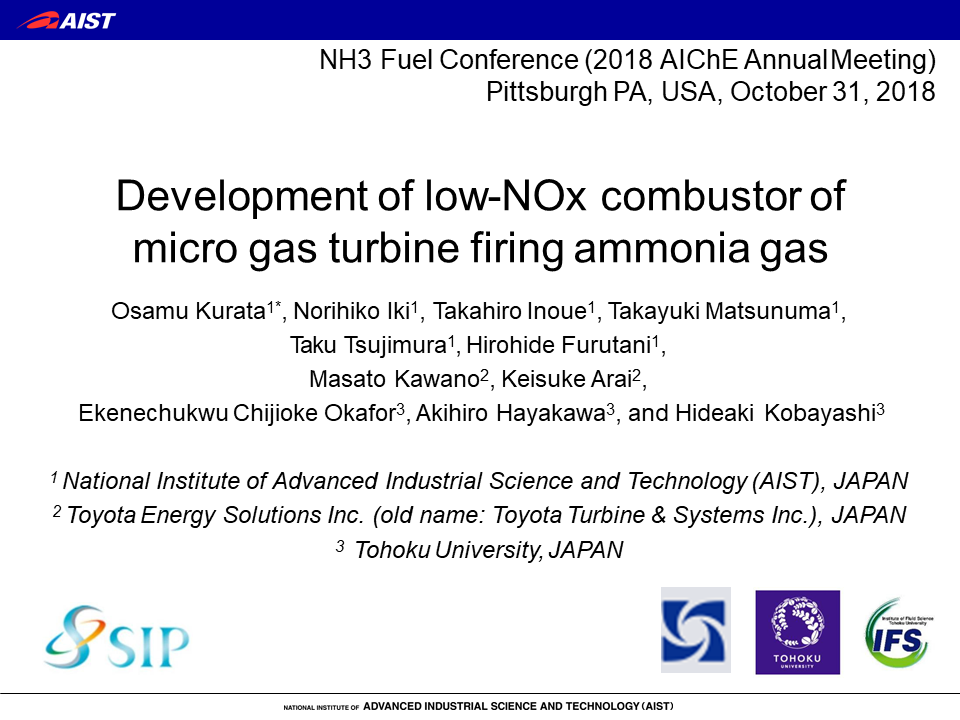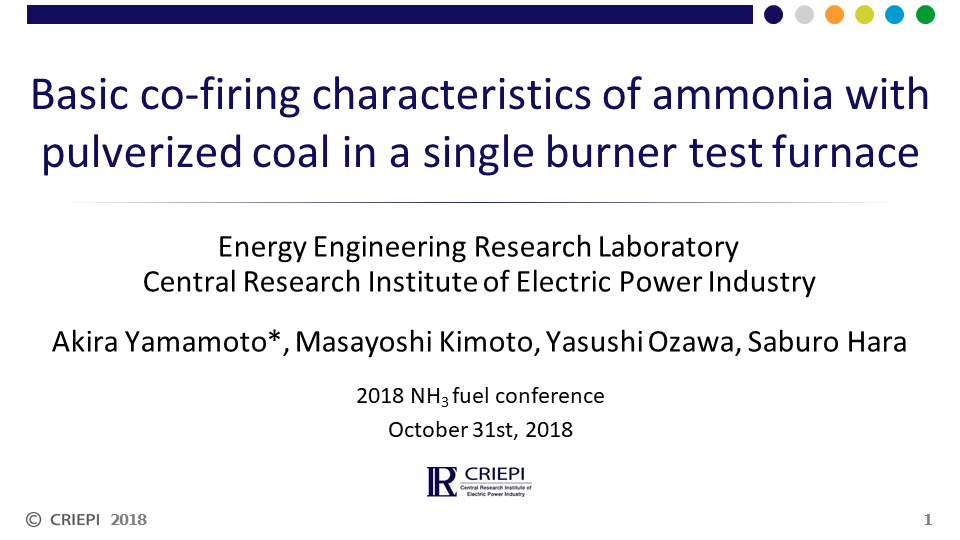Presentation
New Technology of the Ammonia Co-Firing with Pulverized Coal to Reduce the NOx Emission
Ammonia is recognized as the new energy carrier and it is expected to be introduced into the society in a short time, since the infrastructures related to the ammonia, such as the mass production, transportation and storage are already introduced to produce the fertilizer for the agriculture. There is one technical issue, to use the ammonia in the direct combustion as the fuel for the electric power generation. It is the increase of the NO concentration in the exhaust gas. Ammonia contains the large amount of the nitrogen, comparing with any other fuels that human being has ever treated. Nitrogen…
